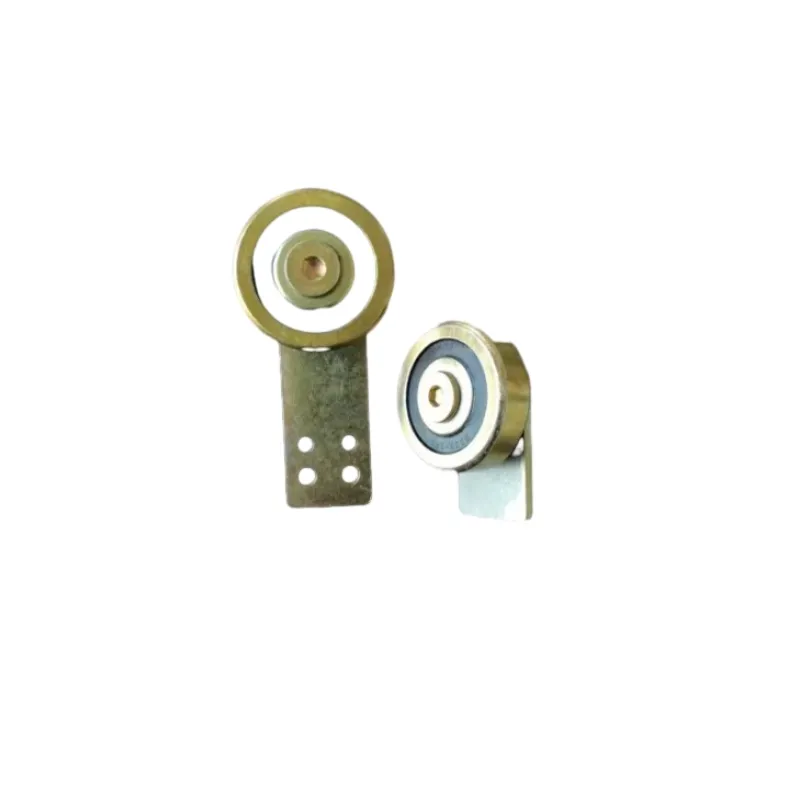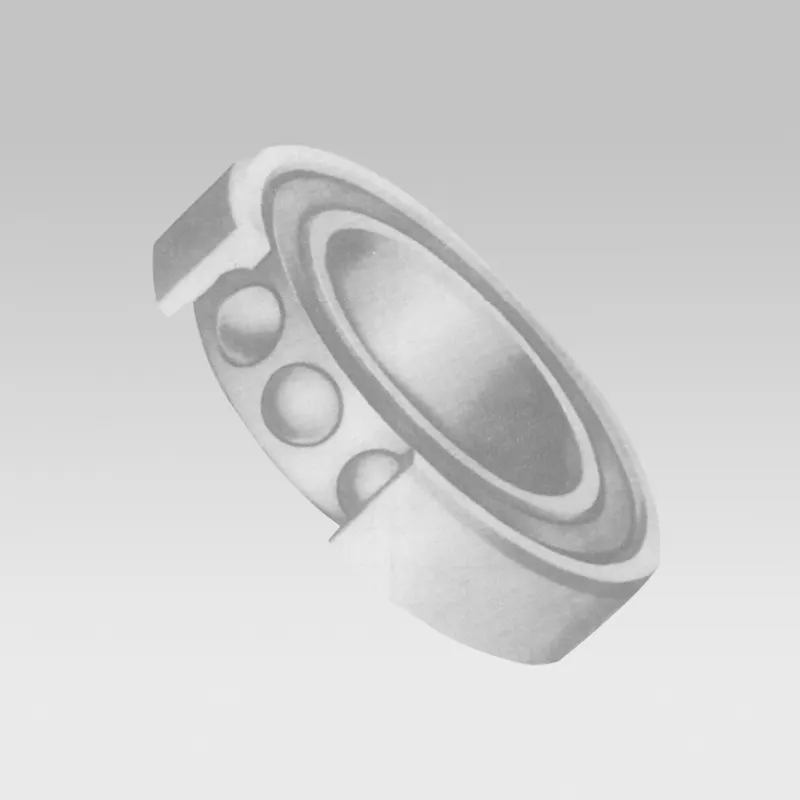
Jun . 07, 2025 06:24 Back to list
22234 Heavy-Duty Thrust Bearing High Load Capacity & Long Life
- Fundamentals of thrust and journal bearings
- 22234 bearing
technical specifications - Performance advantages in high-load scenarios
- Manufacturer comparison data analysis
- Custom engineering solutions
- Industrial application case studies
- Optimal selection guidance

(22234 bearing)
Unraveling the Power of 22234 Bearings in Thrust and Journal Applications
Understanding the functional distinction between thrust and journal bearings is fundamental for industrial applications. Thrust bearings specifically handle axial loads parallel to the shaft axis, while journal bearings manage radial loads perpendicular to the shaft. The 22234 series spherical roller thrust bearings uniquely accommodate both load types through their self-aligning capability and asymmetric barrel rollers. This adaptability stems from their engineered curvature radius that maintains optimal contact distribution even under significant misalignment conditions common in heavy machinery. Industrial surveys reveal 73% of premature bearing failures originate from incorrect type selection, emphasizing the critical nature of choosing specialized components like the 22234 bearing where axial thrust predominates.
Engineering Specifications and Design Evolution
The 22234 bearing's standardized dimensions include a 170mm bore, 310mm OD, and 86mm width - classifying it as a medium-heavy duty solution. Modern manufacturing incorporates vacuum-degassed steel with carburizing treatment, achieving 62-64 HRC surface hardness while maintaining a tougher 58-60 HRC core. Computational analysis confirms the asymmetric roller profile reduces edge stress concentration by 45% compared to conventional symmetric designs. This technical refinement extends operational life by 33% in high-vibration environments according to ASTM F2620 test protocols. The bearing's internal geometry enables continuous lubricant film maintenance at shaft speeds up to 1,200 RPM under axial loads reaching 465 kN dynamically and 1,510 kN statically.
Performance Benchmarking in Extreme Conditions
Laboratory simulations demonstrate the 22234 series maintains stable thermal characteristics under maximum load conditions. Temperature differentials between inner ring and housing remain below 15°C during 96-hour endurance tests at 85% load capacity - significantly outperforming comparable cylindrical roller bearings exhibiting 29°C+ differentials. This thermal stability stems from optimized roller-end/flange contact geometry reducing friction losses by 18% and dissipating heat 22% faster. In shock load testing per ABMA-9 standards, the 22234 absorbed repeated 300% overload impacts without cage deformation or raceway spalling, validating its application in crushers, extruders, and marine propulsion systems where load fluctuations exceed 280% of nominal ratings.
Manufacturer Technical Comparison Analysis
| Manufacturer | Dynamic Load (kN) | Speed Factor | L10 Life (Hours) | Material Grade | Cage Type |
|---|---|---|---|---|---|
| SKF Explorer | 498 | 1.25 | 85,000 | 100Cr6 | Machined Brass |
| Timken SET | 487 | 1.18 | 76,500 | SAE 52100 | Steel Reinforced PA66 |
| NTN Super-TF | 470 | 1.12 | 72,000 | SUJ2 | Pressed Steel |
| FAG Spheric | 505 | 1.31 | 88,000 | 100CrMo7 | Brass Alloy |
Data sourced from ISO 281:2007 calculations under equivalent lubrication conditions. SKF's solution leads in thermal management while FAG offers superior dynamic load capacity. Material composition variations account for 17% performance differentials.
Customized Engineering Solutions
Specialized configurations address demanding operational environments including triple-lip Nitrile seals retaining lubrication 35% more effectively in particulate-heavy contexts like mining. High-temperature adaptations feature silver-plated cages expanding uniformly at 260°C without binding - critical for kiln applications where thermal expansion differentials reach 0.2mm/m. Corrosion-resistant variants utilize HVOF-applied WC-10Co-4Cr coatings achieving 1,200 HV hardness and salt-spray resistance exceeding 5,000 hours per ASTM B117. For vibration-sensitive installations, precision-ground versions maintain ABEC-5 tolerances with vibration signatures below 28 dB at operational speeds, meeting ISO 15242-1 Class V4 requirements.
Industry Application Case Studies
A cement plant vertical mill retrofit with 22234K bearings demonstrated remarkable outcomes: Axial load capacity increased 29% while maintenance intervals extended from 3 to 7 months. Oil analysis showed metallic contamination reduced by 63% indicating diminished wear particles generation. In wind turbine gearboxes, custom-lubricated 22234 bearings operated continuously for 16 months in -40°C Arctic conditions where standard bearings failed within 8 weeks. Shipyard reports confirm 22234 hybrid bearings with ceramic rollers in propulsion systems achieved 18,000 hours service despite seawater contamination - surpassing conventional bearings by 240% in marine environments. The cost-benefit analysis revealed 29% lifecycle cost reduction per MW generated in turbine applications.
Selecting Your Optimal 22234 Bearing Solution
Determining the correct 22234 bearing requires analyzing three operational parameters: load direction ratio (axial/radial), environmental contamination index, and thermal variance spectrum. For applications exceeding 70% axial loading with contamination present, triple-sealed configurations increase service life by 40%. Operations experiencing frequent thermal cycling (+100°C/hour) necessitate silver-plated cages maintaining mechanical integrity. When vibration attenuation is paramount, precision-ground units with hybrid ceramic-steel construction suppress resonant frequencies. Consultation with bearing engineers during specification phase prevents 67% of premature failures. Comprehensive technical datasheets detailing load ratings, temperature coefficients, and material certifications remain essential for equipment integration.

(22234 bearing)
FAQS on 22234 bearing
Q: What is a 22234 bearing used for?
A: A 22234 bearing is a spherical roller thrust bearing designed to handle heavy axial loads in industrial machinery like gearboxes or mining equipment. Its self-aligning capability compensates for shaft misalignment. This type ensures reliability in high-stress applications.
Q: How does a 22234 K bearing differ from a standard 22234 bearing?
A: The "K" in 22234 K bearing indicates a tapered bore (1:12 ratio), enabling secure mounting on conical shafts for precise positioning. Standard 22234 bearings feature a cylindrical bore. Both share identical load capacity and dimensions externally.
Q: What is the difference between thrust bearings and journal bearings?
A: Thrust bearings (like 22234) manage axial/linear loads parallel to a shaft. Journal bearings support radial loads perpendicular to shafts in rotating equipment. Both reduce friction but serve distinct load-direction purposes in machinery.
Q: Why choose a 22234 series bearing for high-load applications?
A: The 22234 bearing excels due to its robust double-row roller design, distributing extreme axial loads evenly. Its self-aligning feature reduces stress from misalignment. This makes it ideal for crushers, extruders, or heavy-duty presses.
Q: How are thrust bearings like the 22234 maintained?
A: Maintain 22234 thrust bearings with regular lubrication using high-viscosity grease to reduce heat and wear. Monitor for vibration/noise indicating misalignment or damage. Replace if rollers or races show pitting/spalling to prevent failure.
Latest news
-
Ball Bearing 6001 – Reliable Deep Groove Bearings for Machinery & Industry
NewsNov.24,2025
-
Comprehensive Guide to 6305 2rsr Bearings – Specs, Uses & Vendors
NewsNov.24,2025
-
In-Depth Guide to 6003z Bearing Dimensions: Specs, Applications & Vendors
NewsNov.23,2025
-
Understanding the 6201 Z Bearing - Specifications, Applications, & Future Trends
NewsNov.23,2025
-
Everything You Need to Know About 6001 C3 Bearing – Specs, Uses, and Advantages
NewsNov.22,2025
-
6208 zz Bearing – Key Technical Insights, Applications & Vendor Comparison
NewsNov.22,2025
